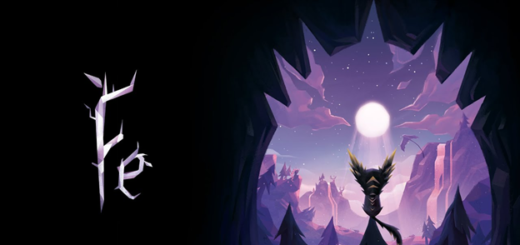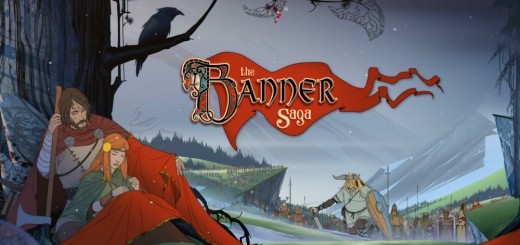VALKYRIA CHRONICLES Review
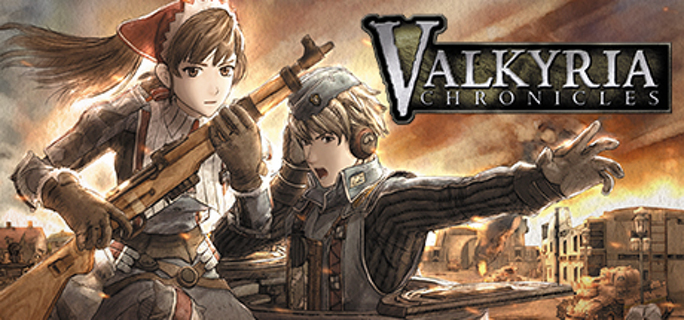
VALKYRIA CHRONICLES is an old game, almost more worthy of a Classic Callback feature than a full review. Yet Sega isn’t one to let sleeping dogs lie, and the early PS3 JRPG/World War II strategy hybrid has once more been dug from its grave and dusted off for a PS4 remaster. The game feels even more dated in 2016 than it did in its 2014 port to Steam, but the fact that the game keeps getting resurrected, and people keep buying it, is a solid testament to the strength of its design. The PS4 adds little to the formula other than a 1080p/60FPS facelift, but remains important for introducing the strategy classic to a new generation of console gamers.
Our stage opens on a loose reinterpretation of the Second World War in a fantasy anime setting. The dastardly Imperials invade the continent of Europa to claim its deposits of Ragnite ore, a mineral used to power everything in the game, from tanks to light bulbs. The tiny nation of Galia stands in the Imperials’ path, and it also happens to be teeming with Darcsens, an ethnic minority that the Imperials either kill on sight or round up in camps where they’re worked to death. As Welkin, a Galian youth and amateur tank operator (convenient), you form a militia with your friends and neighbors to drive the Imperials out before they exterminate the population. There’s also an obnoxious baby pig with wings that follows you around, because hey, the game still needs to sell in Japan.
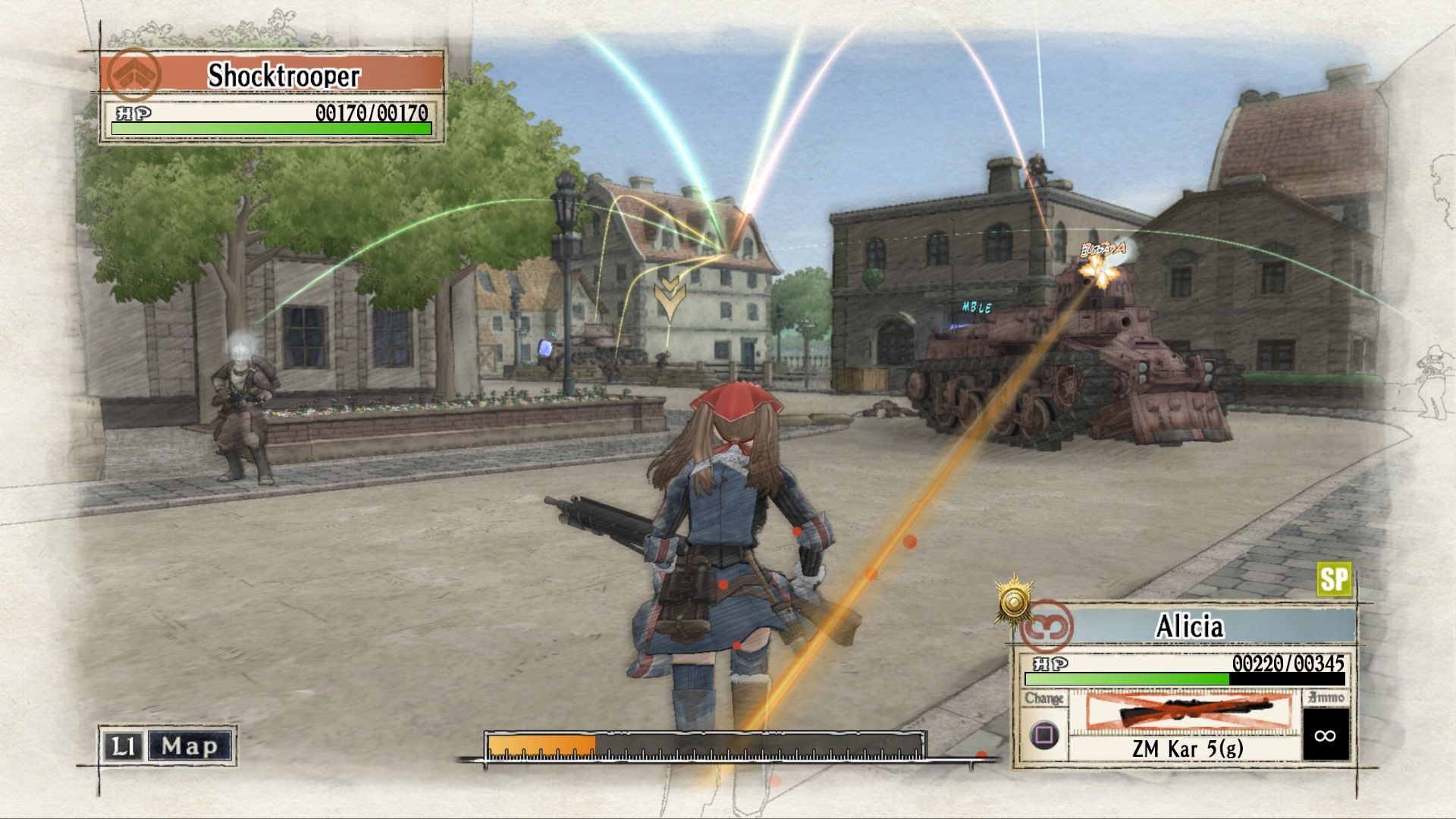
Don’t forget to pack your army issue schoolgirl uniform with that rifle and canteen
VALKYRIA CHRONICLES places a lot of eggs in its narrative basket, though this is a gamble that does few favors. This is a long game, with an expansive lore that few will delve into and less will pay attention to. This is thanks in large part to the dry delivery of the plot, which, rather than through bonafide cutscenes, is mostly through pages upon pages of visual, novel dialogue exchanges. Gameplay segments are separated by up to fifteen minutes of clicking through text, not all of which is even voiced. The result feels like the dreaded codec calls of the earlier Metal Gear Solid entries, though without the charm or quirk that made those games bearable. Storytelling aside, the plot itself is nothing to get excited about. Welkin’s squad are the underdogs that end up toppling a mighty empire through the power of friendship. Along the way, he falls in love with a kawaii country girl and uncovers the secrets of an extinct civilization with godlike powers. It’s a profoundly dull fare that makes the Holocaust allusions feel incredibly exploitative and out of place, and is only made palatable by the unique setting.
Fortunately, the gameplay is a different story entirely and is where VALKYRIA CHRONICLES stands out from the crowd. It’s a mix of real time combat with turn-based strategy that feels like nothing else, as if WORMS 3D and FULL SPECTRUM WARRIOR had a bastard child. Turns are divided between the player’s squad and the opposition’s. Each side shares a pool of action points that can be assigned to each unit, and each unit is worth one action point. The more units you have, the more actions you can perform. Likewise, units that are killed will remove points from the pool, so keeping your troops alive has very real strategic benefits outside of maintaining their specific functions. Certain actions, however, like driving Welkin’s tank or calling in artillery, cost multiple action points, so you’ll rarely have everyone in the squad do something in a single turn.
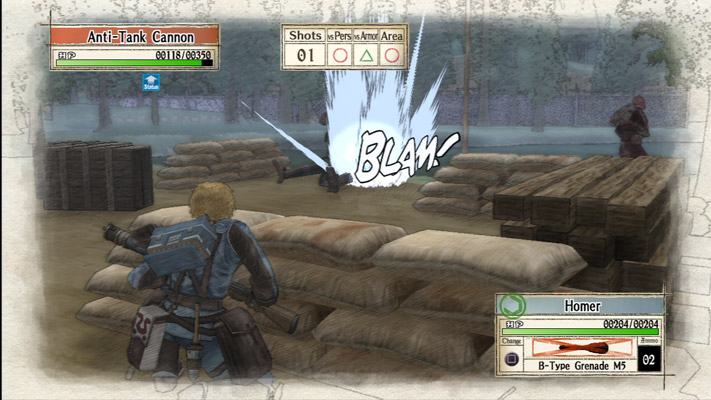
Kamehamehas were much less impressive in the ‘40s
Time stops as you view your units from the overhead map, only resuming when you select a unit to directly control. This part of the game functions similarly to a first person shooter, where you can run, take cover, hide in foliage, and fire at enemies. Troops on the off turn can fire overwatch on active units during their movement phase, so the player has to juggle their immediate concern of staying alive with the greater plan that they the selected that soldier for.
And keeping them alive is a struggle all in its own. VALKYRIA is extremely unforgiving, thanks to the aggressive enemy AI. Leaving even just the hairline of one of your men exposed is just asking for asshole enemy snipers to headshot them from across the map, and Imperial rocket troops will constantly try to flank your vehicles to one shot their thin rear armor. The vital nature of unit positioning, combined with the limited amount of actions that can take place in one turn, means that each minor adjustment becomes a calculated risk that can make or break your mission. Costly mistakes are unbelievably frustrating, but a gambit that pays off results in a nearly unrivaled sense of satisfaction.
In another odd but effective feature, soldiers are levelled up by class, not individually, but each character has their own unique set of perks. While powerful weapons seized from enemy leaders or rewarded for completing objectives are very limited in number, your standard issue gear can be upgraded for distribution amongst your supporting troops. This means that your side mooks are always able to hold their ground alongside the main cast of heroes, despite lacking their powerful abilities or horded loot. While many JRPGs lead you to pour all your upgrades on two or three select, devastating characters, VALKYRIA ensures that all of your troops remain useful throughout the game. The game offers over 30 hours of gameplay between story missions and side quests, so the ability to experiment with all your options, rather than being relegated to a few proven tactics, is extremely welcome.
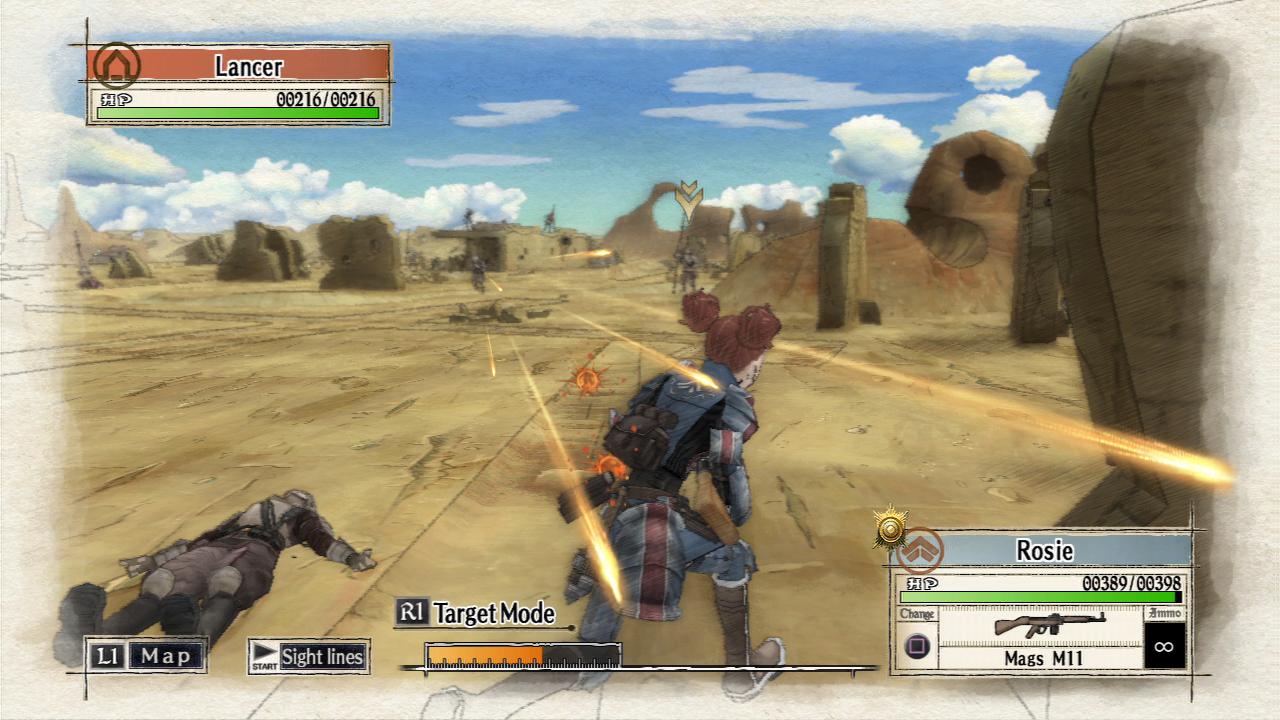
Senpai notices you, and so do the snipers
If there’s one thing about VALKYRIA’s mechanics that warrants criticism, it’s the user interface. Menus are clunky and byzantine to a fault, hearkening back to a time where streamlined UI design hadn’t yet been figured out. New upgrades, recruits, and side quests are periodically made available outside the main story hub, but the player is never given notifications when these features are updated, resulting in many trips between menus that often yield no results. And as made evident by the screenshots, there are an overwhelming amount of HUD elements, so get ready to look at a lot of numbers. All of this being said, the actual graphics are beautiful in motion, HD remaster or not. The great thing about cel shaded or anime art styles is that they effectively age-proof a game in a way that “realistic” renders cannot, and VALKYRIA is no exception.
VALKYRIA CHRONICLES should simply be played because there is nothing else quite like it. The mix of hands-on shooting with lead-from-the-rear commanding, along with the blend of historical fiction with anime fantasy, makes for a unique and eclectic mix of influences and concepts. There really is something here for everybody, and if the melodrama of the story isn’t your bag, then the tactical action certainly will be. VALKYRIA is worth your attention, whether it’s your first time or a well-earned return.
Verdict: Recommend
Reviewed on PlayStation 4, also available on PlayStation 3 and PC.


